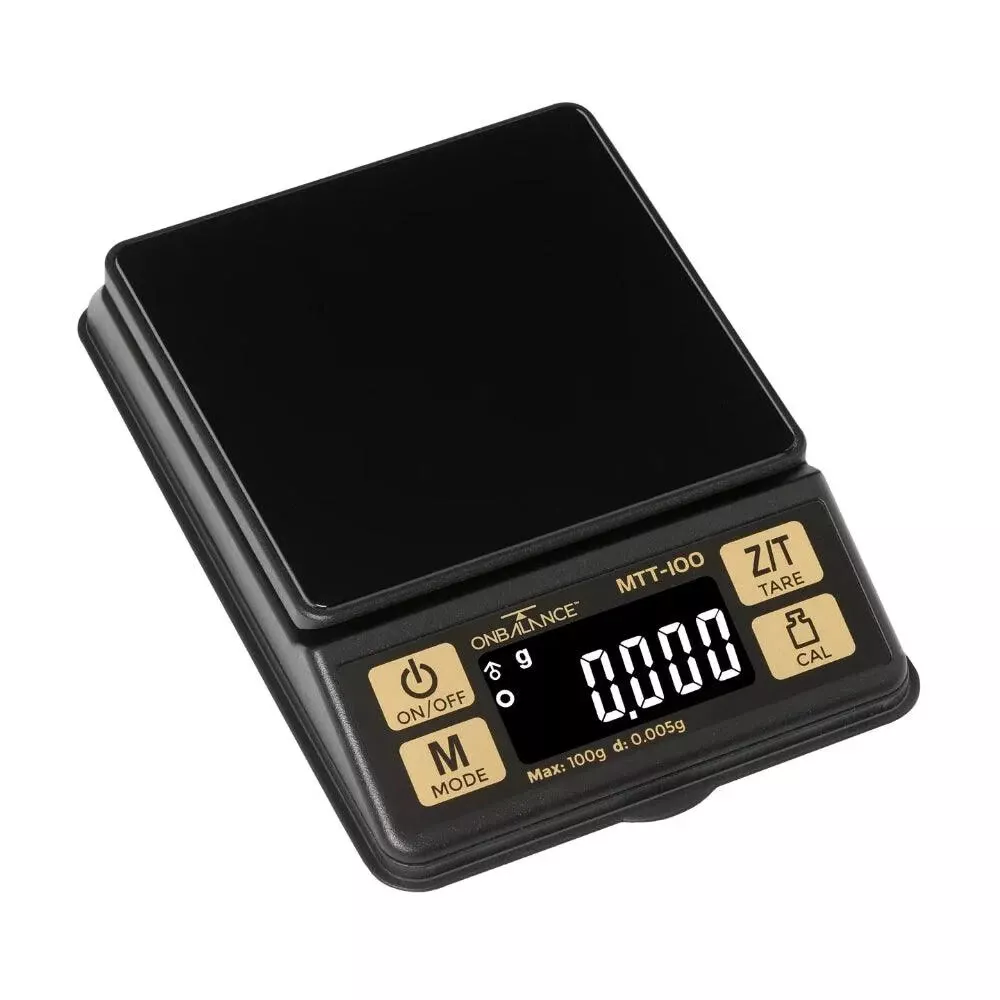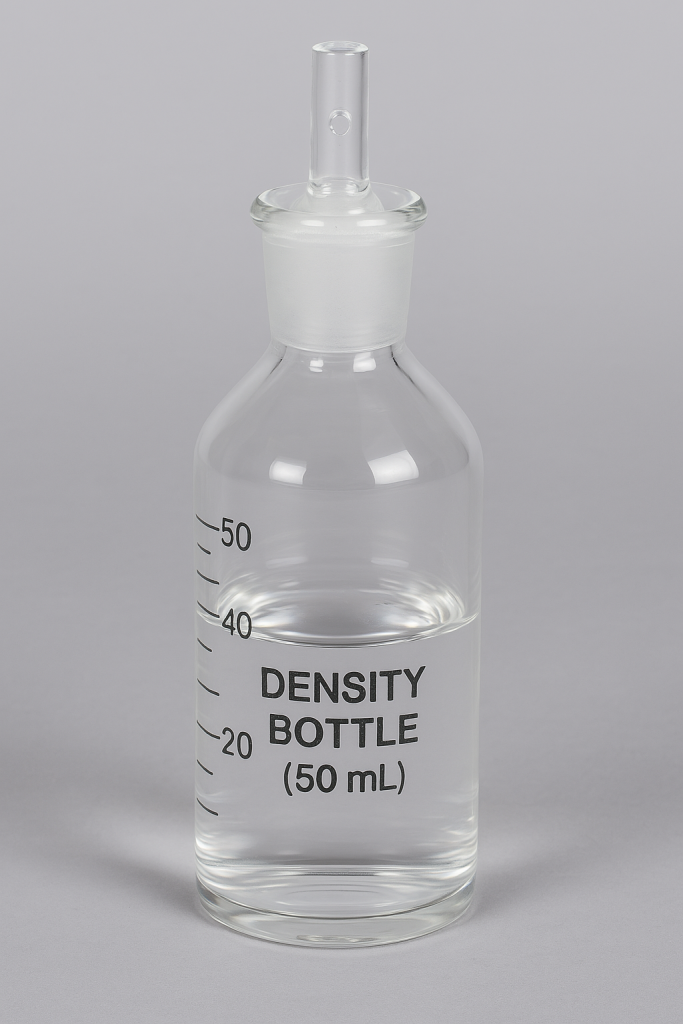Table of Contents
ToggleDetermining the specific gravity of soil solids is an essential geotechnical engineering test that aids in analyzing soil properties such as void ratio, porosity, unit weight, and degree of saturation. This article presents a comprehensive guide to the Density Bottle Method—a widely used laboratory procedure for obtaining accurate measurements of soil specific gravity.
Introduction
Specific gravity (G) is defined as the ratio of the mass of a given volume of soil solids to the mass of an equal volume of water (usually measured at 4°C or 27°C). It is a dimensionless parameter that reflects the inherent properties of the soil particles. In a soil mix, different components (e.g., gravel, sand, silt, clay) may have distinct specific gravities, and the overall value is an average of the individual particles. Typical values are:
| Soil Type | Specific Gravity |
|---|---|
| Gravel and Sand | 2.65 – 2.68 |
| Silty Sands and Silt | 2.66 – 2.70 |
| Inorganic Soils | 2.68 – 2.80 |
| Organic Soils | Less than 2.00 |
Objective of Density Bottle Method
The objective of the Density Bottle Method is to determine the specific gravity of soil solids accurately by using a series of carefully controlled laboratory procedures. This method is particularly suitable for fine-grained soils (more than 90% passing a 2 mm sieve) and can be extended to coarser soils if the sample is pulverized.
Apparatus and Materials
For a successful test, you will need:
Density Bottle: 50 mL capacity with a perforated stopper
Digital Balance: Accuracy of 0.001 g
Vacuum Desiccator and Pump: For de-airing the sample
Oven: Capable of reaching 105°C – 110°C
Constant Temperature Water Bath: Maintained at 27°C
Spatula: For stirring the soil sample
De-aired Distilled Water: Ensures consistency in volume measurements
Clean Cloth or Tissue: For wiping and cleaning the bottle




Test Procedure of Density Bottle Method
The Density Bottle Method involves several systematic steps to ensure accuracy:
1. Preparation of the Density Bottle
Cleaning and Drying: Clean the density bottle thoroughly. Dry it in an oven at 105°C–110°C for about 1 hour.
Cooling: Place the bottle in a desiccator until it cools to room temperature.
Initial Weighing: Weigh the empty bottle with the stopper using a digital balance. Record this mass as M₁.
2. Addition of the Soil Sample
Soil Preparation: Use 5 to 10 g of oven-dried soil that has been sieved through a 2 mm screen.
Weighing: Place the soil in the bottle, and weigh the bottle with the soil and stopper. Record this mass as M₂.
3. Mixing with De-Aired Water
Partial Filling: Add de-aired distilled water to the bottle to cover the soil.
Gentle Agitation: Shake the bottle gently to ensure the soil is well mixed with water.
4. Removing Air Entrapment
Vacuum Process: Remove the stopper and place the bottle in a vacuum desiccator.
Application of Vacuum: Apply a vacuum (approximately 55 cm of Hg) using the vacuum pump for about 1 hour to expel entrapped air.
Stirring: Gently stir the soil with a spatula, ensuring any soil adhering to the spatula is washed back into the bottle with additional de-aired water.
Repeat if Necessary: Reapply the vacuum until no further air bubbles are observed. (Alternatively, gentle heating may be used if a vacuum desiccator is unavailable.)
5. Final Filling and Temperature Equilibration
Complete Filling: Once all air is removed, fill the bottle completely with de-aired distilled water.
Sealing: Insert the stopper securely.
Temperature Control: Immerse the bottle in a constant temperature water bath at 27°C for 1 hour to attain uniform temperature.
6. Weighing with Soil and Water
Final Weighing: Remove the bottle from the water bath, clean and dry the exterior, then weigh the bottle containing soil and water. Record this mass as M₃.
7. Reference Measurement with Water
Bottle Preparation: Empty and thoroughly clean the bottle.
Filling with Water: Fill it completely with de-aired distilled water.
Temperature Equilibration: Place the bottle back into the 27°C water bath for 1 hour.
Final Water Weighing: Weigh the bottle with water and stopper. Record this mass as M₄.
8. Repetition for Accuracy
Multiple Trials: To ensure precision, repeat the above steps at least three times.
Average Reading: Use the average of these trials for the final specific gravity calculation.
Related Laboratory Method
CivInnovateObservations and Data Recording
A sample observations table is as follows:
| S.No. | Observations and calculations | Observations |
|---|---|---|
| 1. | Density Bottle No. | 301 |
| 2. | Mass of empty density bottle (M1) | 41.302 g |
| 3. | Mass of bottle + dry soil (M2) | 54.103 g |
| 4. | Mass of bottle, soil and water (M3) | 99.002 g |
| 5. | Mass of bottle filled with water (M4) | 91.112 g |
| 6. | M2 - M1 | 12.801 g |
| 7. | M3 - M4 | 7.970 g |
| 8. | (M2 - M1) / (M2 - M1 - (M3 - M4)) | 2.65 |
Calculation of Specific Gravity
The specific gravity is determined using the relationship:
Where:
- M1: Mass of the empty density bottle
- M2: Mass of the bottle with dry soil
- M3: Mass of the bottle with soil and water
- M4: Mass of the bottle filled with water
This formula effectively compares the mass difference due to the soil sample with the equivalent mass of water for the same volume.
Precautions for Density Bottle Method
To ensure accuracy in the Density Bottle Method:
Dry the Bottle Thoroughly: Ensure the density bottle is completely dry before use.
Avoid Soil Loss: Take care during stirring and transferring to prevent loss of soil.
Remove Air Bubbles: Use vacuum or gentle heating to ensure all entrapped air is removed.
Consistent Water: Use only de-aired distilled water for all measurements.
Stable Temperature: Maintain a constant temperature (preferably 27°C) during the test.
Repeat Trials: Conduct multiple trials and average the results to minimize errors.
Final Result
After completing the test with multiple trials, the final result is presented as the average specific gravity of the soil sample. For instance, if the averaged value of G is determined to be 2.65, this indicates that the soil’s solid particles are approximately 2.65 times denser than water.
Final Specific Gravity of the Soil Sample = 2.65
Conclusion
The Density Bottle Method is a reliable and widely accepted procedure for determining the specific gravity of soil solids. By following a systematic approach—from drying and weighing the density bottle to de-airing the soil-water mixture and performing final measurements—engineers can obtain precise data that is critical for soil analysis and subsequent engineering design. This comprehensive guide provides all the necessary steps, precautions, and calculations needed to perform the test accurately, ensuring dependable results for various geotechnical applications.



